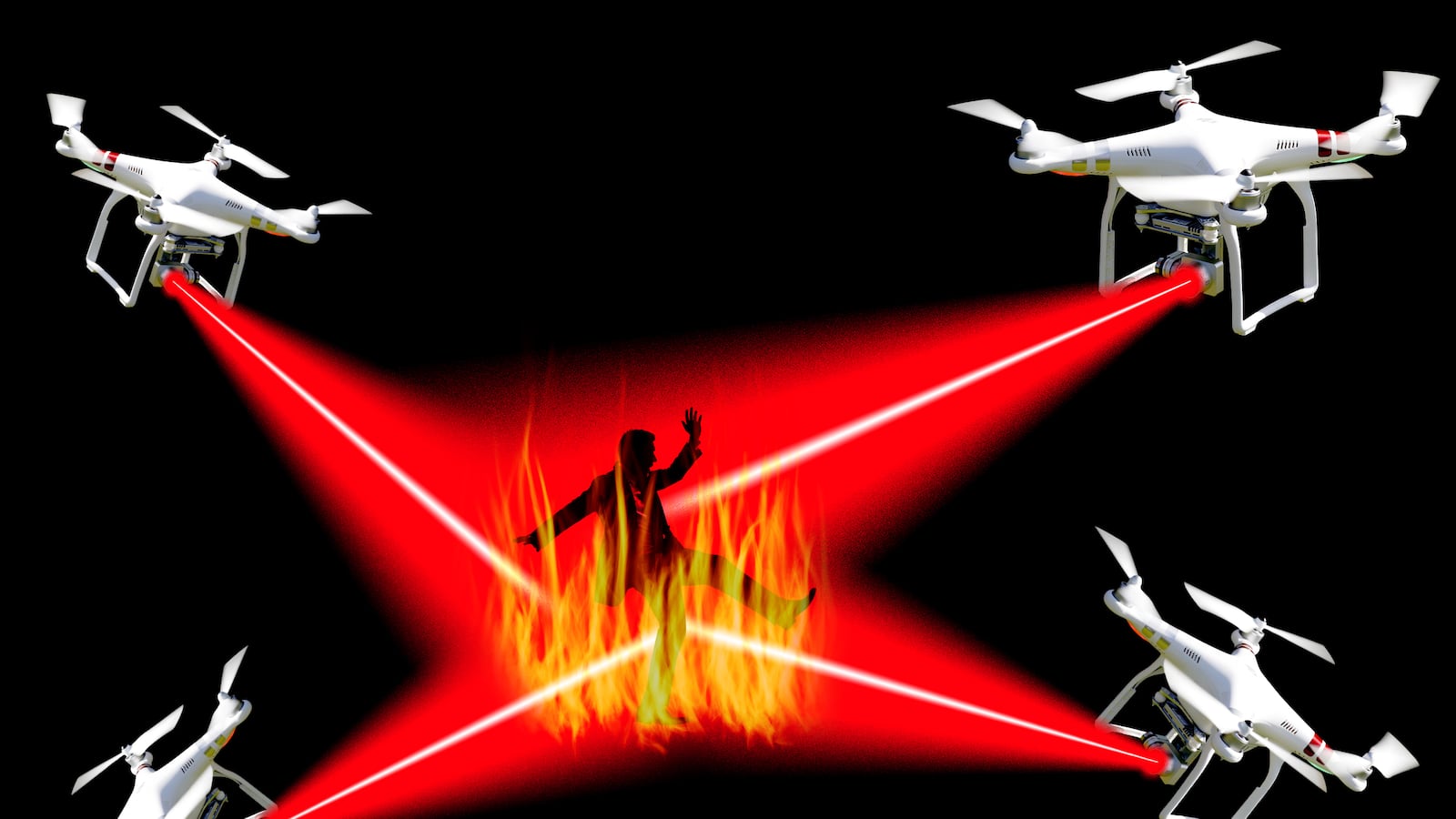Your crazy uncle’s fears about drones may be related to the voices in his head, but they’re not necessarily unfounded.
Drones have become a sort of social nuisance in the last few years: a lambasted technology mostly used for recreational fun, but with the potential to scare soccer moms and territorial shotgun-toting landowners with “what could happen if they’re not stopped.”
Most of the time you’re right to roll your eyes at this stuff: The majority of drones are being used for things like racing, amateur landscape photography, and as an excuse to make children actually leave the living room on the weekends.
But every now and then, you see a drone video that makes you wonder whether we’ve gone too far.
It’s not the creepy picture-taking-in-your-window drones you should be worried about—or even the government surveillance ones flying overhead like some Orwellian nightmare. It’s the ones with tools and extra senses that should make us think.
Let’s start with a seemingly harmless innovation: Someone designed a drone to see and avoid moving obstacles.
It means the drone can protect itself on a factory floor, or maybe during a dangerous storm. Except the researcher demonstrated this technology by assaulting the drone with a fencing foil, and now, hey, we have a drone that can dodge sword attacks!
When you look at every innovation for a second (and undesired) skill, drones are quickly becoming viable replacements for all the horror movie villains that ruined your sleep schedule in child-and adulthood. Researchers are developing projects that will eventually mean there’s nowhere to run, nowhere to hide, and no way to defend yourself should they decide to extract their vengeance.
Let’s run down some of the more recent developments, starting with drones that can stay submerged in water for months. Months. Even zombies can’t handle that much time underwater. The Loch Ness Monster might not be real, but two dozen drones could pop out of the water anytime, ready to take to the air again with a coordinated attack ready to go.
There are supersized drones that carry a person, too. Yes, it was designed as a transportation method, but transportation and detainment aren’t that different. Add a claw to the bottom of this thing and you’ve got yourself an Orson Welles nightmare.
Drones can find you, no matter where you hide. They’re already used for urban search and rescue, and newer developments are helping rescue teams find hikers lost in the woods. How helpful.
Here’s what that search drone looks like when it’s doing the job it was designed for:
But you know what makes a search and rescue drone way scarier? Teaming it up with one of these fun, homemade drone-gun projects.
Most of the people who worry seriously about drone-based takeovers are busy adjusting their foil helmets day to day, and may have lost a bit of touch with reality. And while an artificial intelligence takeover of all remote-controlled drones may be feasible in the distant future, it likely doesn’t spell the apocalypse so much as automation. Remember, most of the controls for these things are rudimentary: They don’t look a lot different from a gaming controller or the RC boxes you’d have gotten with childhood racecars.
And not all of the things people are doing with drones are scary in the “safety and security” sense.
I mean, really?
The thing is, the technology is equally dangerous in the wrong human hands as it is in some dystopian nightmare. That gun-wielding drone that caught everyone’s attention last year wasn’t a federally funded program: It was a teenager with a roll of duct tape and some tools. And while a drone crashing on the White House lawn isn’t necessarily a threat to national security, when you start adding “skills” to the drone—cameras, thermal imaging, a handgun—you can see where this whole hobbyist expansion worries some people.
That’s a concern a lot of citizens and officials are trying to address now, before something bad happens and a high schooler with too much free time ruins wedding video plans for everyone.
Oh, in the meantime, the Department of Defense has one solution to the drone problem.






